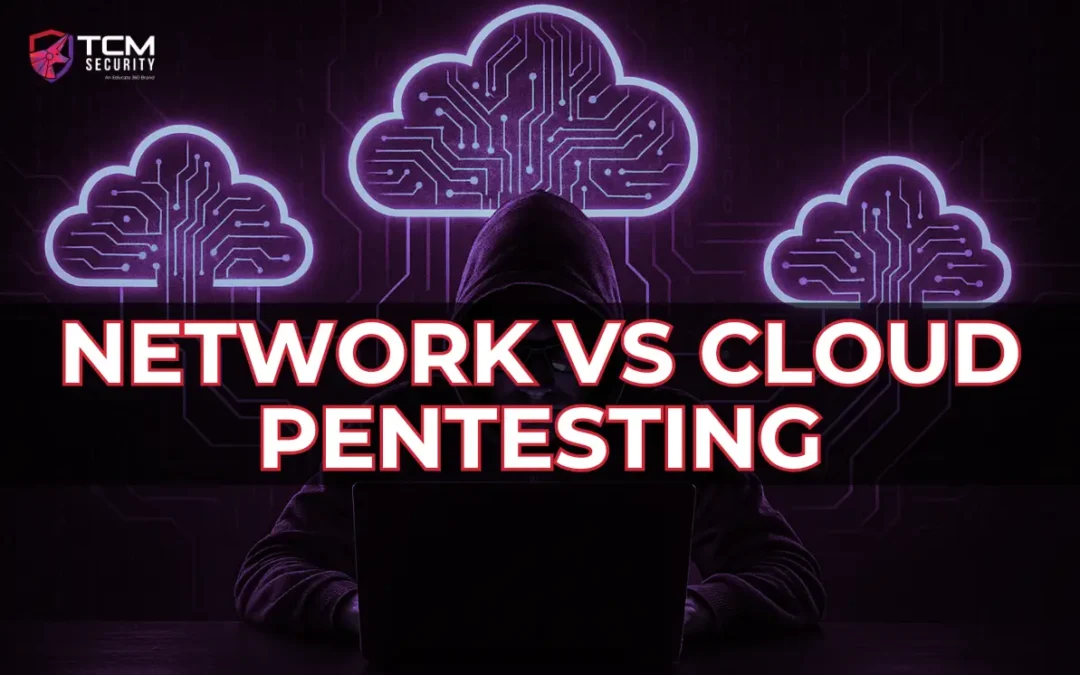What is the Difference Between Network and Cloud Pentesting?
The short version is: They’re very similar, drawing from the same methodology and some similar attack methods. Cloud penetration testing is an offensive security mindset shift toward identities, platform features, automation, and scale rather than the higher layers of the network stack and open ports. To be successful you will want to become very familiar with the cloud service provider and their known common vulnerabilities and misconfigurations. And if you are a junior or mid-level offensive security student who can hack a web app or pivot inside a network, you already have a big head start when it comes to cloud pentesting.
Web pentesting is often thought of as a “next step” for those who want to propel their offensive security skills further. Cloud security occupies a similar space; you take the basics of pentesting and apply them to a new environment with new challenges.
This post defines cloud pentesting, explores the similarities and differences between cloud pentesting and traditional network pentesting, and explains how to learn pentesting in the cloud.
If you are just beginning your journey in offensive security, learning the basics of network penetration testing will help develop a good base of knowledge to build the skill of penetration testing cloud systems. The TCM Academy contains courses on Practical Ethical Hacking as well as beginner web hacking training with the Practical Bug Bounty course, both of which are valuable skills to build off of. If you want to prove these skills in the form of a hands-on certification that doubles as experience, the PJPT and the PWPA are entry-level certifications that cover internal pentesting and web application testing, respectively.
What is Cloud Penetration Testing?
Cloud penetration testing is an offensive security practice focused on cloud provider services, tenant configuration, identity and access management, platform APIs, and managed services that run in or integrate with cloud infrastructure. It blends network pentest techniques with cloud-native concepts: you still look for vulnerabilities, but many of the most valuable findings are configuration and identity issues, or weaknesses in automation and orchestration.
The cloud attack surface includes virtual machines and networked resources (IaaS), platform services like managed databases and app platforms (PaaS), serverless functions, storage and object services, identity systems and service-to-service authentication, CI/CD pipelines and their secrets, metadata services and instance metadata endpoints, and infrastructure-as-code definitions. Misconfigurations in templates, flawed IAM policies, exposed platform APIs, and improper trust relationships are often more fruitful than classic buffer overflows in cloud workloads.
* Take a look at the example of the Snowflake data breach as a real-world example of the impact of weak configurations and IAM in a cloud environment.
The Cloud, Shared Responsibility, and Security
At its most basic, the cloud is data storage. Organizations or individuals pay a service provider to keep and maintain all of the hardware that houses their data and some or all of their software. There are several benefits and drawbacks to this arrangement, but focusing on security, we can see a few pros and cons.
First, let’s take a look at the cloud options:
- Infrastructure as a Service (IaaS) – virtual machines, networks – provider manages physical infrastructure; tenant manages OS, applications, and configuration.
- Platform as a Service (PaaS) – managed databases, app platforms – provider manages the platform; the tenant manages app configuration and data.
- Software as a Service (SaaS) – provider manages most of the stack – the tenant usually controls data, user access, and integrations.
Within these options, the responsibility for security falls with the provider or the tenant at different levels. We will take a look at these responsibilities mapped against the layers of the OSI model.
| OSI Layer | IaaS | PaaS | SaaS | Description of Responsibilities |
|---|---|---|---|---|
| Layer 1 – Physical | Provider | Provider | Provider | Cloud provider manages physical data centers, power, cooling, and hardware. |
| Layer 2 – Data Link | Provider | Provider | Provider | Provider controls switches, routers, and physical network infrastructure. |
| Layer 3 – Network | Shared | Provider | Provider | In IaaS, customers design virtual networks, firewalls, VPNs; in PaaS/SaaS this is abstracted away. |
| Layer 4 – Transport | Shared | Provider | Provider | In IaaS, customers choose protocols and encryption; in higher models, this is handled by the provider. |
| Layer 5 – Session | Customer | Shared | Provider | Responsible for authentication, timeouts, and managing sessions securely. |
| Layer 6 – Presentation | Customer | Shared | Provider | For IaaS, you control OS and data encoding; for SaaS, the provider handles this. |
| Layer 7 – Application | Customer | Customer | Shared | Includes user access, app configuration, and data governance. |
How Does Cloud Pentesting Compare to Network Pentesting?
Cloud pentesting shifts what you look at and how you operate. The primary attack surface is less about open ports on perimeter virtual machines and more about identities, APIs, and configuration. Instead of scanning for exposed services, you are often enumerating roles, policies, service principals, and platform endpoints. Where classic tests hunt for an exploitable service, cloud tests hunt for a chain of trust that can be abused via platform APIs or automation.
Persistence and lateral movement change shape in the cloud. Rather than relying on long-lived shell access and pivoting through internal networks, attackers chain identity tokens, assumed roles, service principals, and misconfigured automation to move laterally. A compromised short-lived token or a poorly scoped role can provide the same reach as a foothold on a critical VM, and in many environments, it is faster and quieter to abuse those constructs than to set up noisy tunnels.
One step that threat actors do not need to worry about (but pentesters do) is scoping the engagement. Since many cloud providers can include multiple organizations’ infrastructures, being sure that you are in the right spot becomes enormously important for penetration testers.
Building on the Same Foundation
Penetration testing is all about the mindset, whether you are testing the security of a small business network, a bank’s web application, or a Fortune 500’s physical headquarters. Think like an attacker and see if you can get “in”.
While there are some differences, there is a lot of crossover in the methodology of network and cloud pentesting. The reconnaissance mindset is nearly identical: Find exposed assets, enumerate what you can, and build a map of attack paths. Many internal and web attack methods will be useful, and the goal is still privilege escalation, data access, and demonstration of other potential impacts.
And, as always, reporting the findings so that the vulnerabilities can be properly remediated is what the client pays for, so that skill is worth developing, no matter which pentesting discipline you’re interested in.
Cloud Pentesting Skill Development
Focusing on a specific provider (currently AWS, Azure, GCP, or OCI) and learning the ins and outs of that environment thoroughly will have a lot of return on investment. The old ethical hacker mantra of “learn it to break it” has applied to every new technology that comes along, and the cloud is no different. Pick a system and dive into the documentation.
We’ve already touched on the transferable basics of enumeration and relatable attack methods, but there are some specific technical skills that will aid you in ethical cloud hacking.
- Provider fundamentals: compute, storage, managed services, and networking primitives for your chosen provider.
- Identity and access control: roles, policies, service principals, STS, and short-lived tokens.
- CLI and SDK fluency: AWS/AZ/GCloud CLI plus at least one SDK such as boto3.
- Infrastructure as Code and DevOps: Terraform, CloudFormation, Helm, and common CI/CD systems.
- Web and API hacking: SSRF, auth bypass, and injection still apply.
If you develop a firm grasp of the basics of pentesting, you can easily add on to that knowledge with the above skills and develop the discipline of pentesting in cloud environments.
Wrapping Up
Cloud security is becoming more important as more businesses take advantage of the reduced cost and high scalability of cloud services. Being able to find the vulnerabilities in these systems is lucrative for threat actors and vital for pentesters. Learn the basics, learn the providers, protect the clouds.
About the Author: Josh Daniels
Josh is an avid storyteller and writer who loves learning about the behind-the-scenes of the digital world we live in. While his professional experience is in content marketing, Josh began pursuing a career in cybersecurity in 2022, gaining a Sec+ certificate along with other training from industry professionals and a life long learner attitude.
When he is not writing, Josh enjoys outdoor adventures with his family, watching movies, reading, and an unofficial (unpaid) side gig as a Game Master Consultant for several friends who play table top RPGs. At TCM, Josh has found a home where his passion for storytelling and cybersecurity meet.
“Once men turned their thinking over to machines in the hope that this would set them free. But that only permitted other men with machines to enslave them.”
– Frank Herbert
About TCM Security
TCM Security is a veteran-owned, cybersecurity services and education company founded in Charlotte, NC. Our services division has the mission of protecting people, sensitive data, and systems. With decades of combined experience, thousands of hours of practice, and core values from our time in service, we use our skill set to secure your environment. The TCM Security Academy is an educational platform dedicated to providing affordable, top-notch cybersecurity training to our individual students and corporate clients including both self-paced and instructor-led online courses as well as custom training solutions. We also provide several vendor-agnostic, practical hands-on certification exams to ensure proven job-ready skills to prospective employers. Pentest Services: https://tcm-sec.com/our-services/ Follow Us: Email List | LinkedIn | YouTube | Twitter | Facebook | Instagram | TikTok
Contact Us: [email protected]
See How We Can Secure Your Assets
Let’s talk about how TCM Security can solve your cybersecurity needs. Give us a call, send us an e-mail, or fill out the contact form below to get started.

